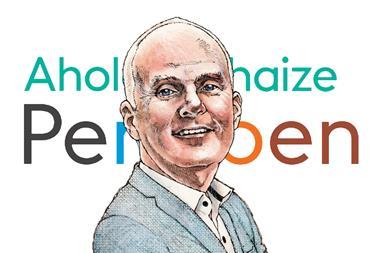Over the past decade, the real estate private equity fund sector has flourished. Opportunistic funds, also known as ‘value-added’ or ‘opportunity’ funds, are perhaps the most prominent vehicles in this sector. Whatever they are called, their success stems from the ability of savvy general partners (fund managers) to locate and capitalise on over-discounted risk or overlooked value-enhancement opportunities.
These funds have been raising capital steadily over the past years as pension funds and other major investors reallocate their assets toward real estate because of stock market volatility. They have also been increasing their geographic spread, moving into Russia and Eastern Europe, the western European suburban market, as well as China. But, as the sector becomes more established, it is starting to face the same challenges as more mature industries.
In 2002 Ernst & Young’s Real Estate, Hospitality and Construction practice launched an annual survey of opportunistic real estate private equity funds in hopes of enhancing the industry’s knowledge of this important sector. The first edition of the survey was sent to more than 100 general partners. Those who replied represented $72.3bn of equity raised in 145 separate funds between 1988 and 2001. The results of our second annual survey are due to be released this autumn.
New concerns
The number of opportunity funds has grown rapidly and their underlying investments have become increasingly more complex and global. Originally perceived as finite-life investment vehicles, these funds have arguably become viable, infinite-life businesses able to support the operating organisations built to manage them.
In the early days of the sector, general partners could concentrate on transactional issues. But today, growth in the sector has led to a greater focus on three management and operating basics.
Finance and performance reporting
The first of these basics is financial and performance reporting. As this sector of the industry has grown, interest has heightened regarding the varied reporting practices used by real estate private equity funds. Our survey identified three distinct methods of financial statement reporting (ie, historical cost, income tax, and fair value), with the overwhelming majority reporting in accordance with fair value – although this was determined using different methods.
Investors are also seeking greater transparency in reported information, a greater ability to measure performance on an interim basis and an ability to benchmark. Because of the complexity, diversity and dynamic nature of the large number of the underlying investments held by opportunistic real estate private equity funds, no ‘one-size-fits-all’ solution exists.
There is no doubt that there are inconsistencies in, and, in many instances, a limit to, the types of information being provided to investors. Much of the success of these private vehicles is dependent upon relationships, execution of strategies, and accumulation of knowledge sometimes deemed proprietary and often deemed a competitive advantage.
Tax efficiency
The second issue that fund mangers are concentrating on is the efficiency of their funds’ tax structure. Many funds are using special tax structures (ie, blockers) to minimise unrelated business income tax (UBIT) for tax-exempt investors and are developing procedures to monitor UBIT issues and avoid UBIT traps throughout the life of the fund. Funds are also looking for efficient structures to minimise foreign taxes, foreign tax withholdings for US investors and US taxes for both domestic and foreign investors. Funds also reported that they are looking for ways to insure that the investors’ relative capital accounts (after allocation of income and loss) are in accordance with the intended cash waterfall distributions, including efficiently designing partnership agreements and developing procedures for effective monitoring.
Streamlining processes
The third important concern for these funds is the investigation of ways to streamline processes and transform their businesses to make them technologically efficient and reduce costs. By maximising the efficiency of fund processes and procedures, and thereby reducing costs, the yield to investors can be increased. For the most part, the major global funds are focusing on infrastructure and operations. They recognise that the complexities have grown and that the risks of a ‘spreadsheet-based’ environment are simply too great. Some of the biggest obstacles facing these organisations include a lack of communication between departments, currency, language, cultural and time-zone differences, and lack of standardised procedures and processes. Advances in technology can enable the general partner to overcome many of these issues. The funds making the greatest strides recognise that technology is not a silver bullet, but rather a tool to enhance operational efficiency as well as improve internal controls.
A growing sector, growing up
In a little more than a decade, opportunistic real estate private equity funds have become a major component of the real estate capital markets globally. With this expansion and the gradual maturation of this sector has come the type of operational issues and problems experienced by many industries. General partners are facing increased pressure to standardise performance reporting, create greater transparency in financial reporting, and develop consistent valuation methodologies for investments. There are many areas where general partners may have an opportunity to drive cost savings, including adopting and integrating technology solutions and improving global communications and identifying and implementing appropriate tax structures and strategies. The real estate private equity fund sector has come far in the last decade; but it still has a long way
to go.
The new edition of our survey, ‘Opportunistic Investing: Real Estate Private Equity Funds’ will be published this autumn. To request a copy, please contact Dovid Frankel on +001 212 773 4536 or e-mail: dovid.frankel@ey.com
Richard White is a partner in Ernst & Young. The Ernst & Young Real Estate, Hospitality and Construction practice serves more than 3,500 clients worldwide, advising both the industry and corporate occupiers on all aspects of the real estate development cycle, from bricks and mortar to strategic options for corporate real estate.












No comments yet